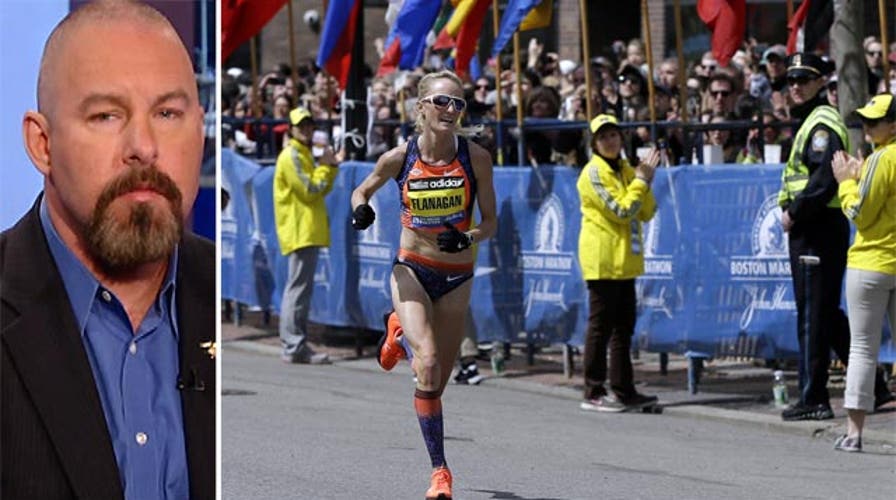Public circulation of surveillance images a good thing?
Former FBI special agent weighs in on investigation
In the wake of the Boston Marathon bombing, which saw the use of footage from cell phones and closed circuit TV cameras to help identify the suspected bombers, pundits and elected officials alike have been singing the praises of urban camera networks—and suggesting that ever more such government surveillance is the key to stopping future attacks.
But a closer look at the facts suggests just the opposite: Dispersed “Little Brother” monitoring by private cameras can provide many of the benefits of centralized “Big Brother” surveillance by governments—but without the public expense or risks to civil liberties.
Slate’s Farhad Majoo led the call for more surveillance in a column titled “We Need More Cameras, and We Need Them Now.”
Lamenting that Boston boasts fewer than 60 law-enforcement-controlled CCTV cameras (excluding those in the subway system), Manjoo suggested that more at the scene of the bombing might have given police “a chance to see something” before the explosions that killed three and wounded scores more.
Elected officials got in on the act as well. New York Mayor Mike Bloomberg called the bombings “a terrible reminder” of the need for “investments” in technologies like the city’s $200 million “Ring of Steel,” comprising some 3,000 cameras just in lower Manhattan.
Rep. Mike King (R-NY) told MSNBC that we “need more cameras” in order to “stay ahead of the terrorists…who are constantly trying to kill us.”
[pullquote]
Random acts of violence inevitably make us feel anxious and helpless, and it’s only natural to want to believe that if we only figure out the right policy, we can somehow prevent such events from ever recurring.
But this particular control fantasy seems especially implausible here.
Between the throngs of spectators and police on the scene and the television cameras broadcasting the event, the Boston Marathon must have been one of the most monitored spots in the country on that grim afternoon.
That we can identify suspects from video footage after the fact—knowing the time, location and method of the attack—does not make it realistic to suppose an observer at a monitor station could have identified the impending attack and intervened in time when those on the ground did not, however comforting that supposition might be.
Terror attacks are (thankfully) so rare and varied that any system with the slightest chance of detecting a real one would necessarily yield a vast, paralyzing number of false positives.
It is also unlikely that cameras will be especially helpful in deterring such attacks. Even when it comes to ordinary crime—where the perpetrators are generally motivated by the desire to make a quick buck without getting caught—studies have been mixed and inconclusive about the value of CCTV cameras as a crime deterrent.
Some show significant declines in crime in some regions of cities with camera networks, which may be attributable to the cameras—but many show no discernible effect at all.
If the deterrent power of cameras against ordinary criminals remains in question, how much more doubtful is it in the rare case of the individuals unbalanced and committed enough to spend weeks plotting mass murder?
Realistically, surveillance cameras are typically going to be valuable after an attack, in helping the authorities identify and apprehend the perpetrators.
Yet we don’t need costly public camera networks for that—as the Boston investigation shows.
The most useful footage of that heavily-recorded bomb site came from a nearby Lord & Taylor department store.
Days later, when a botched 7-Eleven robbery was erroneously ascribed to the bombers, footage from the store itself that helped clarify facts. And back in 2011, it was a Safeway grocery store’s camera that captured the shooting of former Rep. Gabby Giffords in Tucson.
It may be slightly less convenient, but police routinely use video from private security cameras to investigate serious crimes.
Does it really matter who’s recording us if we’re on tape everywhere? It surely might. A diffuse array of privately-owned “Little Brothers” provide much of the same value to police as a centralized and networked Big Brother system—but without posing serious civil liberties concerns.
Citywide networks are far more susceptible to abuses, ranging from the merely crass—as in the case of the British operators convicted of using public cameras to peep through a young woman’s bedroom window—to the politically disturbing—as when New York police used cameras and license plate scanners to track attendance at local mosques.
As face recognition technology improves, centralized systems should raise even more concerns: It may soon be possible to create detailed retroactive records of particular individuals’ activities—a type of monitoring so intrusive the Supreme Court recently suggested it could implicate our Fourth Amendment rights even if limited to “public” spaces.
It is tempting to believe a sufficiently omniscient government can keep us safe from all harm—but it is not realistic, and when it comes to public camera networks, succumbing to wishful thinking is likely to be both costly and perilous to civil liberties.
Instead of yearning for a protective Big Brother, we should attend to the ways the proliferation of Little Brothers can aid police without the need for an expensive and dangerous architecture of centralized surveillance.

